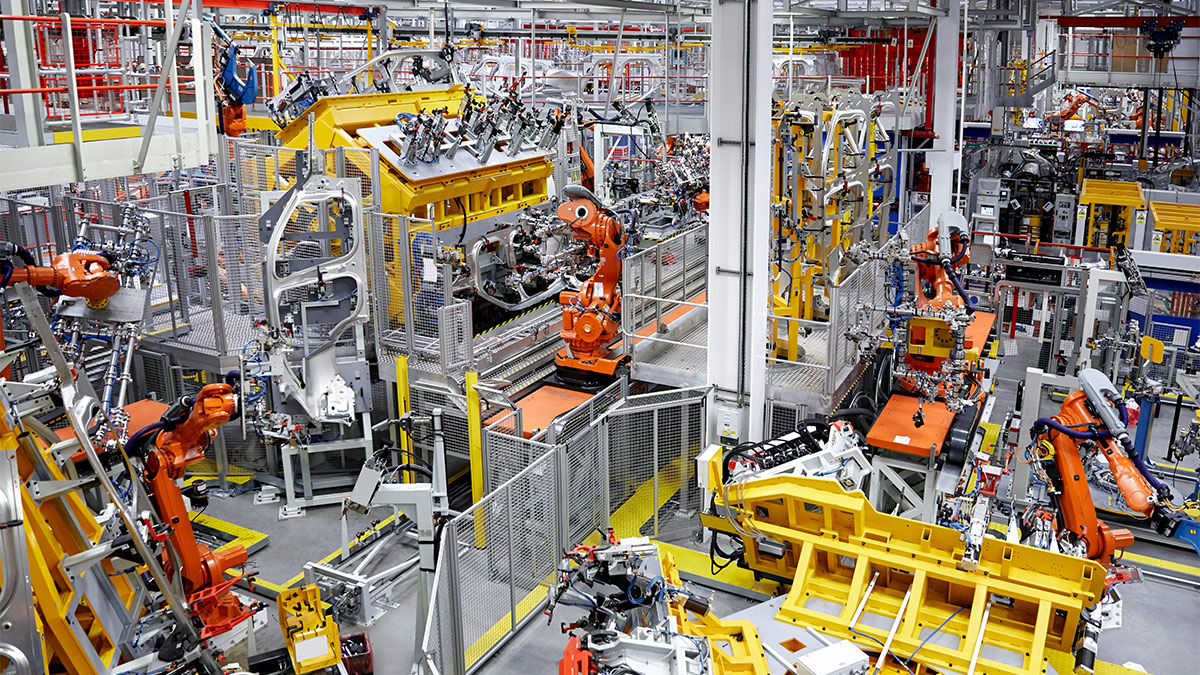
Many large corporations have invested in digital twins: photorealistic virtual replicas of products or operations from the physical world. Modern personal computers and a new generation of software simulation tools can now bring these powerful modeling and visualization capabilities to small and mid-size firms as well. While they might not be quite the equivalent of their high-end brethren, they can help accelerate the ramp-up of new product designs into volume manufacturing and can facilitate continuous process improvement.
Organizations have long been using computers to simulate the physical world. One of the earliest drivers of the development of digital computers was the desire to calculate things like projectile trajectories quickly or run mathematical models that would speed up the development of other weapons systems. But for many decades, computer outputs took the form of enormous tables of numbers that required an expert to interpret.
The development of computer graphics and visualization systems changed this dramatically: Computer animations helped people to visualize the results of all that mathematical modeling in an accessible way. By the 1990s, simulation had been solidly embraced in engineering design, chemistry, the modeling of oilfield reservoirs, weather forecasting, and a wide range of other computationally intense fields.
Insight Center
All of that computing power used to be quite expensive. In 1997, when I ran high-end marketing for Silicon Graphics/Cray Research, we sold simulation systems for critical applications such as flight and weapons-control systems and running complex facilities such as power plants. Back then a system such as a Cray C932 cost $32 million, and it had performance comparable to today’s Apple A12 Bionic processor found in an iPhone XS. We also sold our high-end visualization systems for $1 million — today a consumer gaming system from Nintendo or Sony does a lot better for less than $500. A notebook computer can now house a simulation model for designing and fine-tuning a complex assembly line or a call center and can provide remarkable insights for several thousand dollars per user.
The low cost of this capability means that firms of all sizes can now take advantage of this digital wizardry in a variety of areas:
Operations planning and design. Industrial engineers have long used computer-aided design (CAD) software to design such things as the physical layout of shop floors and materials-handling systems. But they typically then have built the physical system, experimented with it, and then fine-tuned it as they began operating the plant. By incorporating simulation, they can now perform all these functions without the expense of building. At essentially no cost, they can explore alternatives, test the ability of their initial layouts to handle different product flow or demand scenarios, and make refinements virtually before committing capital investments. This accelerates the deployment of new production processes and time to market and reduces risks.
With such a digital twin, managers can test ways to get the most out of production lines, find and eliminate bottlenecks, experiment with different routing and control strategies, and optimize the placement and sizes of work-in-process buffers much more quickly than before. Modern simulation programs even incorporate avatars of people who staff positions on the shop floor, which allows planners to factor in how quickly and easily they can move or how far they have to travel to pick up components or to reach specific tools. Models incorporate realistic images of machines, so it almost looks like you are walking through a virtual world in a video game.
Process Improvement. Simulation modeling allows rapid “what if” experimentation with processes, and as actual operating data is collected and the model is refined, plant engineers can do rapid, low-cost experiments on the digital twin to improve processes without interfering with production. This can speed process improvement and eliminate waste more quickly. Models can also be used to emulate control systems and test new approaches before actual implementation.
Closer design and manufacturing collaboration. Using a simulation model, product designers who work on complex product assemblies can rapidly iterate on assembly sequences with their manufacturing counterparts, improving the manufacturability of their designs as well as understanding the implications of their choices. Just as sharing CAD models improved communications between designers and manufacturing engineers, process simulation models allow them to collaborate throughout the entire product lifecycle, increasing opportunities for faster production ramp-ups and more flexible and efficient processing. These virtual models make it possible to obtain much quicker answers to “what if” questions like how fast a firm can increase capacity.
Training. Simulation modeling can be used to train new team members and offer them a big picture view of operations before they begin work on a line. This helps them become proficient at their new jobs quickly.
Communications and marketing. These simulation tools can be a great marketing tool to demonstrate a firm’s capabilities to customers. They allow customers to walk through digital mock-ups. While the models might not be as photorealistic as Microsoft’s Flight Simulator and might be closer to Team17’s OVERCOOKED, they will get better as even more computing power gets deployed.
In talking with many small and medium-sized firms, I have been surprised at how few have started to make use of these tools. They are missing a major opportunity. The new generation of low-cost simulation software offers rich capabilities and fast payback times. It’s time for firms of all sizes to take advantage of them.

